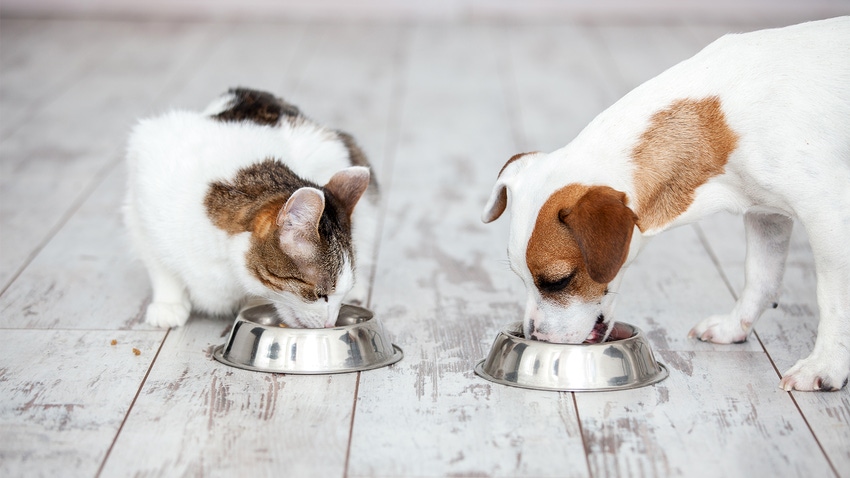Legislators introduce PURR Act to change pet food regulations
The new bill raises concerns from the Association of American Feed Control Officials regarding its potential impact on pet food safety oversight and labeling regulations, emphasizing the need for transparent and safe reforms.

At a Glance
- The PURR Act proposes a streamlined federal system for approving pet food ingredients, bypassing state involvement.
- The pet food industry supports the PURR Act, arguing it fosters innovation and reflects changing consumer preferences.
- Some associations like AAFCO oppose it, fearing it weakens safety checks and allows misleading labeling of ingredients.
The Pet Food Uniform Regulatory Reform Act of 2024 is cleverly coined the PURR Act, but not everyone is showing signs of contentment. H.R. 7380 was introduced to the House of Representatives on Feb. 15 with the intent of clarifying the marketing and labeling of companion pet animal food through federal oversight and removing involvement by state agencies.
“AAFCO (Association of American Feed Control Officials) is concerned that the PURR Act, as it’s currently written, will cause confusion, inconsistency and risk for pet owners rather than foster a safer and more innovative industry,” Austin Therrell, AAFCO’s executive director, said. “Under the proposed legislation, state regulators would no longer be able to verify if trendy marketing claims and buzzwords could actually be validated by pet food manufacturers and would no longer be able to take enforcement action on products that were considered misbranded and not nutritionally adequate.”
The regulatory process for animal food is complex. “Currently, feed additives that are used in pet food are required to be approved through one of three avenues: The Food Additive Petition process, the GRAS [generally recognized as safe] notice program or the AAFCO Ingredient Definition Request process,” Therrell explained. “The Food and Drug Administration (FDA) and state governments work in partnership under a national integrated food safety system that allows FDA to utilize the expertise and resources of state feed programs to strengthen pet food safety inspections and protect consumers against unsafe, fraudulent or misleading advertising and labeling practices.”
The proposed bill would create a streamlined federal regulatory process for new pet food ingredients. The argument put forth in the bill is that “as pet owners’ relationships with their pets have changed, so too has their understanding of pets’ nutritional needs and preferences.” The bill provides for FDA to allow ingredients that are GRAS in pet foods without being notified if the ingredients are identified in the AAFCO Official Publication and if there are no findings by FDA that the ingredients are not GRAS.
The catch is that FDA does not authorize GRAS ingredients for human food. The program for notification is voluntary. Consumer mistrust of additives has led some states to seek bans of certain ingredients. California recently banned four substances and New York, Washington and Illinois have bills pending. As a result, FDA is reevaluating the safety of these GRAS chemicals.
“Many states have the authority to reject the approval of GRAS ingredients that have not been voluntarily submitted to the FDA or are ‘self-affirmed’ GRAS,” Therrell said. “This check and balance in the system does present a challenge to pet food manufacturers, but it’s important to protect consumers against the use of novel ingredients that have not been through the appropriate review process. AAFCO members have seen a lot of variability in the quality of self-affirmed GRAS submissions, and while not always the case, often these submissions need additional scientific data to meet the requirements of the FDA GRAS notice program.”
As written, the PURR Act would allow pet food manufactures to use self-affirmed GRAS ingredients that have not been voluntarily submitted to FDA, Therrell cautioned. “Since the legislation would prevent state regulatory authorities from conducting pre-market label reviews, there would potentially be no governmental agencies (state or federal) verifying that the use of new novel ‘self-affirmed’ GRAS ingredients are in fact safe for our pets,” he said.
While oversight of these substances is certainly needed in human food, Therrell argues that the need for oversight is even higher in animal food since pets have very distinct dietary requirements. They rely on the same complete and balanced formula to meet their daily nutritional needs and they can’t always communicate with us when something doesn’t make them feel well.
AAFCO has other concerns about labeling. H.R.7380 states that manufacturers may use words on packaging such as “and/or” and “contains one or more of the following.” The organization cautions that this would allow manufacturers to change or omit ingredients without disclosing this information to consumers.
Therrell acknowledged there are opportunities to improve efficiency and bring more innovation to the marketplace, but he stressed it must be done in a safe and transparent manner. To truly create a modernized regulatory system, he emphasized the importance of engaging states and those intimately involved in the day-to-day oversight of pet food products.
About the Author(s)
You May Also Like






